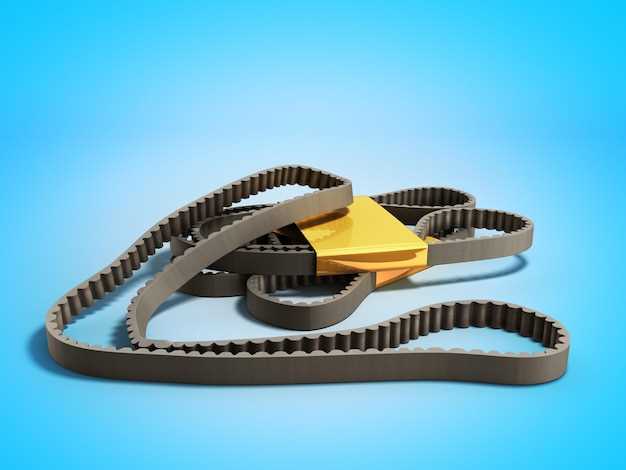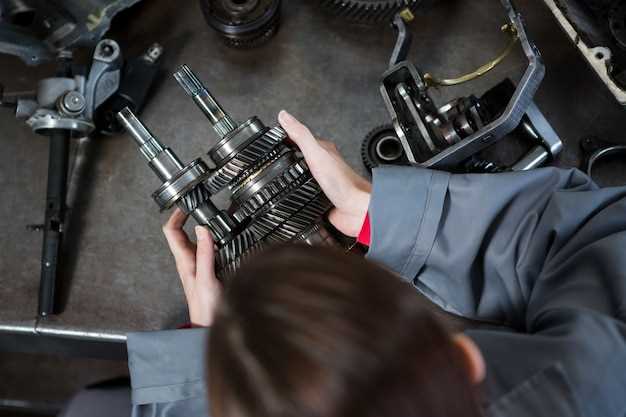
The geometry of engine mounting plays a crucial role in determining the overall balance and stability of a vehicle. Engine mounts not only secure the engine to the vehicle chassis but also serve to dampen vibrations, absorb shocks, and influence the handling characteristics of the vehicle. An optimal mounting geometry is essential for maintaining a low center of gravity and distributing weight evenly, which directly affects the vehicle’s performance dynamics.
When examining the impact of engine mounting geometry, it is important to consider factors such as the location of the engine, the angle of the mounts, and the material used. Incorrectly positioned engine mounts can lead to uneven weight distribution, resulting in compromised handling and increased tire wear. In contrast, well-designed mounting systems contribute to improved traction and stability during both acceleration and braking.
Moreover, the relationship between the engine’s weight and the vehicle’s suspension system is another critical aspect. A well-engineered mounting geometry can significantly enhance the effects of the suspension, leading to a smoother ride and better cornering capabilities. By optimizing the position and setup of the engine mounts, manufacturers can enhance the driving experience while ensuring safety and efficiency.
Understanding the Role of Mounting Angles on Suspension Dynamics

The mounting angles of an engine significantly influence the dynamics of a vehicle’s suspension system. These angles determine the direction and magnitude of forces transmitted from the engine to the chassis and subsequently to the suspension components. Proper alignment ensures optimal load distribution, affecting handling, ride comfort, and overall vehicle stability.
The angle of the engine relative to the horizontal plane, commonly referred to as the engine tilt, affects the center of gravity. When the engine is tilted forward, it lowers the center of gravity, enhancing cornering stability. Conversely, a rearward tilt can raise the center of gravity, potentially compromising handling during sharp turns.
Furthermore, the angle of the engine mounts affects the vibration characteristics of the vehicle. An optimal mounting angle minimizes vibrations transmitted to the chassis, which is crucial for maintaining ride comfort and protecting sensitive components. Incorrect angles can amplify vibrations, leading to fatigue and premature wear of suspension elements.
Additionally, the mounting angles influence the suspension geometry, particularly related to camber and caster angles. These adjustments affect tire contact patch, influencing grip and stability. For instance, an engine mounted at a greater angle may cause the front suspension to adopt a more aggressive camber angle during cornering, improving traction but potentially increasing tire wear.
Moreover, the mounting angles play a critical role in anti-dive and anti-squat characteristics of the suspension. Properly set angles can enhance the vehicle’s response during braking and acceleration, stabilizing weight transfer and improving overall handling performance. Misalignment in this regard can lead to undesirable body roll and decreased driver confidence.
In summary, the influence of engine mounting angles on suspension dynamics is multi-faceted. It affects weight distribution, vibration isolation, suspension geometry, and dynamic handling characteristics. For engineers and designers, understanding these relationships is essential to optimize vehicle performance and ensure a balanced driving experience.
Evaluating the Influence of Engine Position on Weight Distribution

The position of the engine within a vehicle’s chassis significantly impacts the overall weight distribution, which in turn affects handling, stability, and performance. A well-balanced vehicle typically exhibits consistent tire wear, enhanced traction, and predictable steering responses, making the engine’s location a critical design consideration.
Two primary configurations for engine positioning are front-mounted and mid-mounted setups. Front-mounted engines, popular in many production vehicles, distribute weight predominantly over the front axle. While this configuration can enhance acceleration and provide good grip during braking, it often results in oversteering during high-speed cornering due to the rear’s lighter weight.
In contrast, mid-mounted engines, commonly found in sports cars, allow for a more even distribution of weight between the front and rear axles. This arrangement can lead to better balance and reduced polar moment of inertia, facilitating quicker turnaround in corners. The proximity of the engine to the center of the vehicle also minimizes the effects of weight transfer, allowing for improved handling characteristics.
Additionally, the height of the engine’s installation influences the vehicle’s center of gravity. A lower engine position contributes to a reduced center of gravity, which enhances cornering stability. Conversely, a higher engine position may elevate the center of gravity, potentially leading to unwanted body roll and instability during performance maneuvers.
Moreover, advancements in engine design and hybrid technologies are leading to innovative alternatives in weight distribution strategies. Compact engines with integrated electric powertrains can be positioned in various locations to optimize balance without compromising power output. This flexibility allows engineers to create vehicles that not only meet performance standards but also enhance driving experience through meticulous weight distribution.
In conclusion, the influence of engine position on weight distribution is paramount to vehicle dynamics. Proper consideration of engine mounting geometry can lead to improved handling capabilities, safety, and overall driving satisfaction. Engaging in comprehensive evaluation and testing allows automotive engineers to fine-tune this critical aspect of vehicle design, thereby achieving optimal performance outcomes.
Analyzing the Effects of Engine Mounting Materials on Vibration Control
Engine mounting materials play a critical role in vibration control within automotive applications. These materials significantly influence the transmission of vibrations from the engine to the vehicle chassis, ultimately affecting ride quality, driver comfort, and overall vehicle dynamics. Common materials used in engine mounts include rubber, polyurethane, and various composites, each exhibiting distinct properties that dictate their performance in vibration damping.
Rubber is one of the most widely used materials for engine mounts due to its excellent damping characteristics and ability to absorb vibrations effectively. It provides a flexible interface that allows for some movement, thereby reducing the transmission of vibrations to the vehicle frame. However, rubber mounts can degrade over time due to environmental factors such as temperature variations and exposure to oils, leading to a loss of vibration isolation and a potential increase in noise transmission.
Polyurethane mounts, on the other hand, offer enhanced durability and resistance to wear compared to traditional rubber materials. They maintain their mechanical properties over a wider temperature range and are less prone to degradation. Polyurethane also has a higher stiffness, which can lead to improved engine responsiveness; however, this increased stiffness may also result in a harsher ride if not calibrated correctly. The trade-off between vibration isolation and engine performance must be carefully balanced when selecting polyurethane mounts.
Advanced composite materials are gaining traction in the automotive industry due to their lightweight properties and customizable vibration damping characteristics. These composites can be engineered to provide specific damping qualities tailored to the vehicle’s design requirements. However, the manufacturing process for these materials can be more complex and expensive, which may limit their widespread application in mainstream automotive design.
The choice of engine mounting material can also influence the overall vehicle balance and dynamics. Soft mounts may enhance comfort in daily driving conditions, while stiffer mounts can improve performance during aggressive driving maneuvers. Therefore, it’s essential to conduct thorough analyses, including simulations and real-world testing, to evaluate how different materials interact with the vehicle’s suspension system and contribute to overall vibration control.
In summary, the selection of engine mounting materials is crucial for effective vibration control in vehicles. Each material exhibits unique benefits and drawbacks that must be carefully considered to optimize vehicle performance and comfort. As automotive technology continues to evolve, the exploration of innovative materials and designs will further enhance the capabilities of engine mounts, leading to improved vehicle balance and a more refined driving experience.













